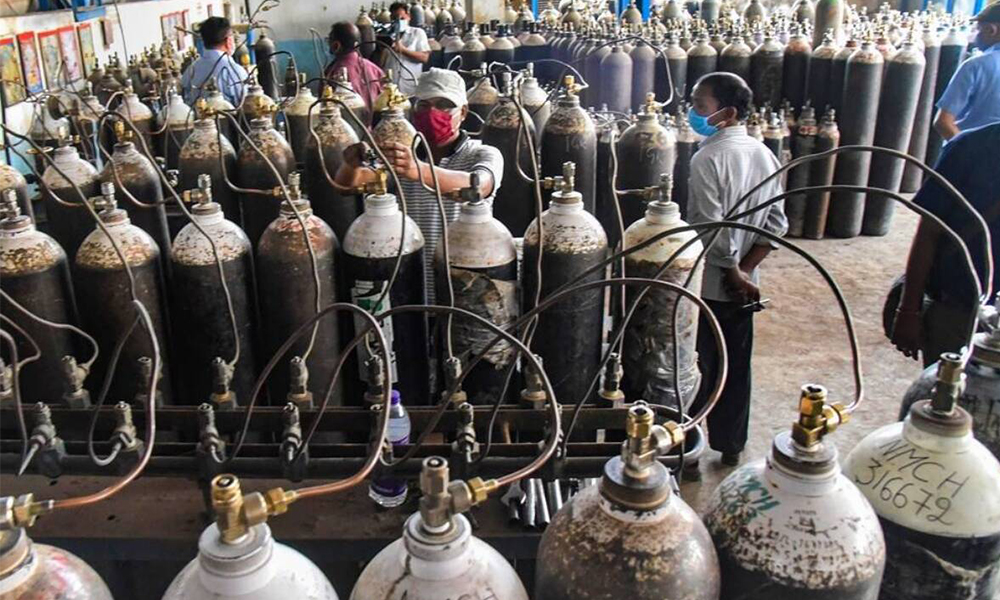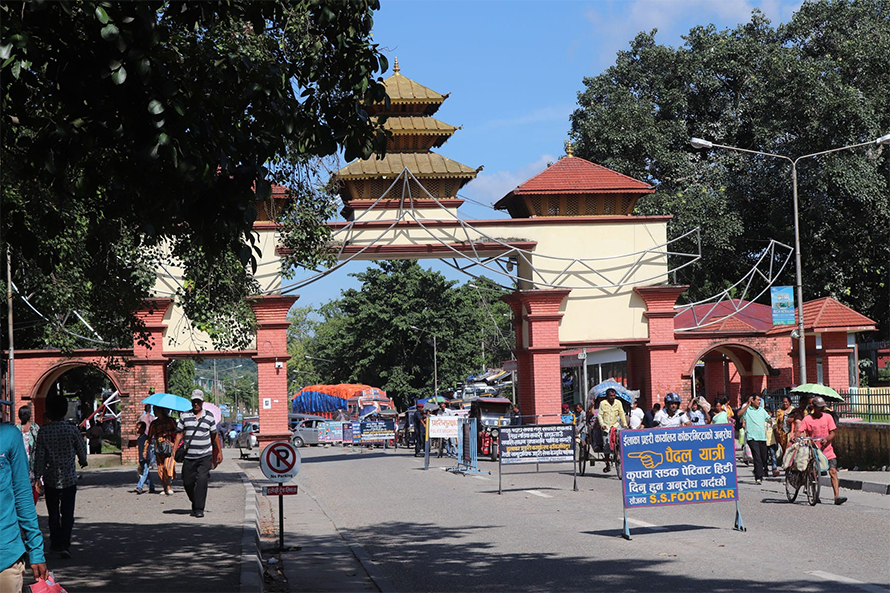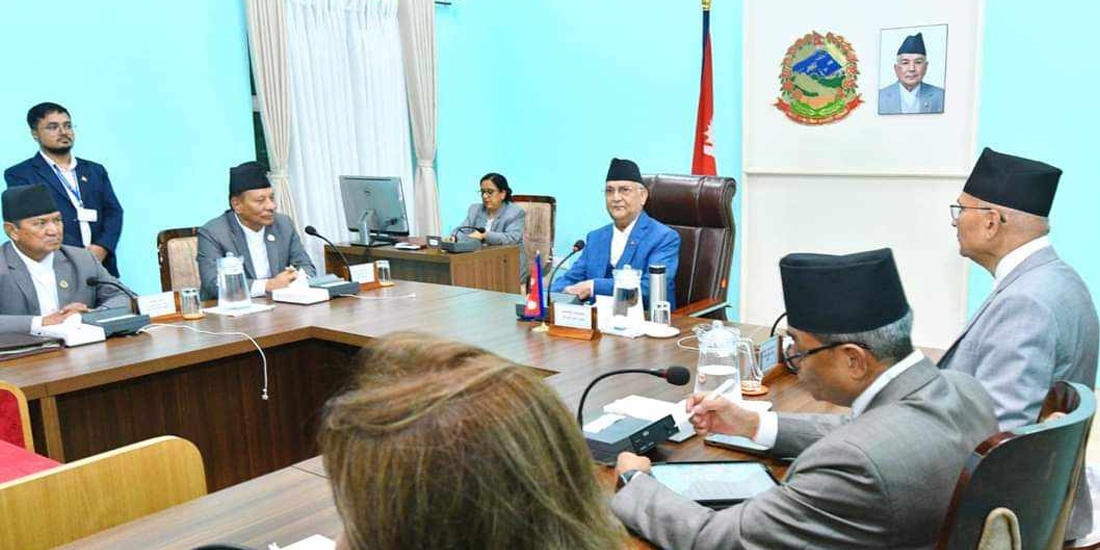Consumers stockpiling oxygen cylinders at home, shortage in market

KATHMANDU: Consumers have started stockpiling small cylinders at home after rumours of oxygen shortage started circulating in the market. As a result, there is a shortage of cylinders in the market, explains traders.
Oxygen industrialist Birendra Kumar Shanghai says that consumers have taken small cylinders home to see if there is a shortage. There is not much problem when they take the cylinder home but there is a danger of shortage in the market.
Stating that they have to go to the hospital for treatment if they have COVID, he advised the consumers not to put unnecessary cylinders in the house.
Oxygen cylinders of 1.5, 6.5 and 7 QV litres are sold in Nepal. A 1.5 QV cylinder is used for home use. At present, only 1.5 QV liter oxygen cylinder is taken home and kept in stock.
Consumers have taken small cylinders home as it is easy to take home.
One vendor said, ‘People who have never used oxygen before are coming to look for oxygen. Customers who come to buy oxygen only know that it might not be available later due to the COVID crisis. There is no information on how and how much to use. Following the rumours, new customers are coming to take the cylinders home. ‘
Demand for this has grown significantly as a result of recent corporate scandals.
Infectious disease specialist Dr Sher Bahadur Pun said that there was no shortage of oxygen gas in the market. He says that storing oxygen in the house does not make sense.
Pun said, “It is not enough to take oxygen at home. If you have a COVID infection, you have to go to the hospital for treatment, so there is no point in storing oxygen cylinders at home.”
He said that even those who are taking oxygen at home daily do not have to buy more oxygen than they need. He said that even after the covid infection, oxygen cannot be used at home and the doctor will prescribe other medicines at the hospital.
The government has decided to give tax exemption on 10 health items including oxygen cylinders to prevent a shortage. As per the decision of the cabinet meeting held on 26th April, it has been decided to give exemption from customs duty, value-added tax and excise duty on the import of 10 types of materials including oxygen required for the treatment management of the patients infected from COVID-19.
The small oxygen cylinder has a capacity of 1.5 QV litres. According to the manufactures the price of oxygen other than cylinders is around Rs 200 to Rs 300. The price of a cylinder including oxygen is around Rs 8,000 to Rs 12,000.
Operation of 22 Oxygen Plants with an investment of Rs. 170 million
There are 22 oxygen plants in operation in Nepal with an investment of Rs 170 million. It is possible that the shortage of oxygen produced will be met by the operated plant now, but the manufacturers say that the shortage of cylinders is causing problems.
According to the Department of Industry, Kathmandu’s Himal Oxygen Industry has been built with the highest investment in Nepal. Its total capital is Rs 88.33 million.
Only one of the registered oxygen industries in Nepal has foreign investment. Half of the total investment of Rs 20 million in Top Out Nepal Pvt. Ltd. in Solukhumbu is by foreigners.
There are 11 oxygen industries in Kathmandu district, 2 in Nawalparasi, 2 in Rupandehi, 2 in Banke, 1 in Morang, 1 in Solukhumbu, 1 in Nuwakot and 1 in Chitwan.
As there is a city-centred oxygen industry in Nepal, there is a problem in delivering oxygen to remote places, says the spokesperson of the Ministry of Health, Dr Jageshwar Gautam.
Director of Navjyoti Oxygen Gas Industry, Birendra Kumar Shanghai, said that there would be no problem in oxygen distribution in Nepal. He said, ‘We have oxygen industries in every city. As there is an oxygen industry all over the country, there is no problem with import. ‘















